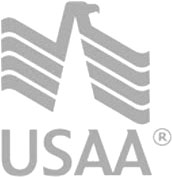Just to start with some wicked horns and some fun, that title link takes you to a Blood, Sweat and Tears music video. Regrettably, I know almost nothing about music. But the word flood is in the title and I do know about flood insurance! Soon you will too. Here we go.
When hubby and I bought our house over twenty years ago, we were shocked when we received a mortgage condition requiring flood insurance. Our property is adjacent to a 20 acre nature preserve filled with trees (and bears, deer, raccoons …). Imagine our surprise when we discovered a very small stream behind our house. Well, that explained the need for flood insurance! But wait. Our house is built on a downward sloping hill. The stream is not just at the base of this hill, but about 100 yards past the property border. It was literally no fun getting that mortgage requirement removed, the flood maps redrawn and the condition eliminated. But we were successful.
Years later, we bought a beach house. Of course we needed flood insurance there, right? Well, not really. It turns out the builder had “rebuilt” the portion of beach where our house stood and then elevated our house even more. We were 15 feet above the floodplain! We did need a “base” amount of flood insurance (the lowest coverage for the least amount of cost, required for every house in the town). Yay!
That was all until Superstorm Sandy decided to fly into the state right over my beach house. (Someday I will compute exactly what those odds were … good grief.) We were covered for the resulting (miraculous) minimal damage and all was well, right? Well, no. Afterwards, the flood insurance system was so “tapped” and messed up and over spent, our “base coverage” went up 80%! And we had essentially not needed it in the first place! Imagine what happened to those who were already paying a high rate.
No need to imagine. Let’s talk about that just a bit.
In Ocean City, NJ, per The Ocean City Sentinel, a local resident was quoted as follows. “Kasimos said his flood insurance would rise from $1,000 to $30,000 annually.” That is not a typo … $30 THOUSAND, not $3 thousand. Mr. Kasimos and friends apparently and eventually went on to form Stop Fema Now whose mission statement is:
StopFemaNow was formed in January 2013 in response to drastic flood insurance premium hikes as a result of a confluence of the Biggert-Waters Act of 2012, inaccurate and incomplete FEMA flood maps, and questionable actuarial calculations.
Yes, the flood insurance program got, well, flooded with claims over a few decades. And they responded in numerous ways--required houses to be raised, grandfathered in old rates, stopped the grandfathering of old rates, raised rates, lowered rates, and the story continues. Read more about all of that here on Wikipedia. FEMA itself (the owner of all things disaster) has its own Flood Insurance Reform page.
Let’s discuss just one “fix” plan, the one that included raising houses prone to flooding so no future flooding would occur and premiums would, therefore, be lower. Yes, raising a house costs a bundle also. But it was more of a “one time” cost to raise and repair homes, as opposed to horrendous flood insurance costs forever, right? See some raised houses here.
Regardless, while roofs (and all parts of homes) were raised in many cities across the country, there were issues. I bet you’re shocked to learn that! Sarcasm was called for there!
Here’s what Yahoo said about that raising initiative:
- The process cost $100,000 or more, depending on the home's size, location and foundation.
- It was recommended that houses be raised 1 to 2 feet above the minimum requirement.
- Raising those built on a slab foundation cost more and took longer because walls had to be opened and cabinets removed.
- Air conditioning, heating, power and other utilities usually had to be raised also.
- Age and health conditions depending, lifts, stairs, or elevators, had to be added.
- The raised houses had to be set on pilings or cinder blocks.
- Many homes received initial storm damage. That also had to be repaired before or during the raising.
- After raising homes, questions about porches, chimneys, and interior spaces that no longer “worked” also added to the time and money requirements.
Some or, in rare cases, most of the cost of this raising was covered by flood insurance, grants, local legislation, etc. But it nearly always took quite a while to complete and cost more than the original estimate.
How big a problem is this whole flood insurance issue? Do that many homes really need it? Should it be that expensive? To answer those questions, let’s just look at the Weather Channel’s list of the Costliest U.S. Hurricanes.
10. Hurricane Rita (2005): $23.7 Billion
9. Hurricane Wilma (2005): $24.3 Billion
8. Hurricane Ivan (2004): $27.1 Billion
7. Hurricane Ike (2008): $34.8 Billion
6. Hurricane Andrew (1992): $47.8 Billion
5. Hurricane Irma (2017): $50 Billion
4. Hurricane/Superstorm Sandy (2012): $70.2 Billion
3. Hurricane Maria (2017): $90 Billion
2. Hurricane Harvey (2017): $125 Billion
1. Hurricane Katrina (2005): $160 Billion
Looking at those big $Billion numbers, the smug among us may ask, ”Why in the world would any idiot buy a house on the beach or in a flood plain or anywhere that is hurricane prone?” To that, I may reply, “Pick your poison!” Without being a total idiot, like building a house on stilts in the middle of the ocean or constructing a below ground bungalow in New Orleans, there are dangers pretty much everywhere one might consider buying or building. Just for fun, check out, “Dangerous Places to Build Houses” or “The Top Ten Worst Places to Build a House.” But, seriously, think blizzards, tornados, fires, mud slides, earthquakes, nuclear power plants … As I digress just a bit here, I searched for the safest places to live in terms of natural disasters. This article, on CBS news, lists:
10. Warren-Troy-Farmington Hills, Mich.
9. Denver
8. Chicago
7. Allentown, Pa.
6. Dayton, Ohio
5. Bethesda-Rockville-Frederick, Md.
4. Buffalo, N.Y.
3. Akron, Ohio
2. Cleveland
1. Syracuse, N.Y.
But that list does not include the crime rate, financial disarray, property values, or insane amounts of snow or cold. It is however true that most parts of Denver do not need flood insurance. Aaaaannnndddd back to this article’s raison d'être, flood insurance.
In October of 2018, flood insurance requirements changed. A major change was allowing customers to choose their own flood insurance provider. They could then cancel coverage with NFIP (National Flood Insurance Program) mid-year if certain conditions were met.
Here are links to some of the current flood insurance providers:
Neptune Flood Insurance | For as Little as $1/Day
National Flood Insurance Program | Get Cheap Flood Protection...
Or just find one at, “Best Flood Insurance Companies for 2019” courtesy of the Simple Dollar.
Before we get to desperately needed jokes and levity, take a gander at this to see just how serious this flood insurance issue is right now. “NRDC – Going Under: Long Wait Times for Post-Flood Buyouts Leave Homeowners Underwater” Here’s to universal sunshine.
Two men are waiting for appointments with their insurance claims adjuster. They chat and learn they have a common bond. The first one says "My restaurant was wiped out by a fire, everything inside was wrecked."
The second one says "Mine was taken out by a flood, total loss too."
The first one thinks a bit then asks "How do you start a flood?"
~~~~~~~~~~~~~~
Husband: My wife is missing. She went to rescue people from the flood yesterday and has not come home ...
Sergeant at Police Station: What is her height?
Husband: Gee, I'm not sure. A little over five-feet tall.
Sergeant: Weight?
Husband: Don't know. Not slim, not really fat.
Sergeant: Color of eyes?
Husband: Sort of brown I think. Never really noticed.
Sergeant: Color of hair?
Husband: Changes a couple times a year. Maybe dark brown now. I can’t remember.
Sergeant: What was she wearing?
Husband: Could have been pants, or maybe a skirt or shorts. I don't know exactly.
Sergeant: What kind of car did she go in?
Husband: She went in my Jeep.
Sergeant: What kind of Jeep was it?
Husband: (sobbing) It's a 2010 Rubicon with Sprintex Supercharger with Intercooler, DiabloSport T-1000 Trinity Programmer, Teraflex Falcon 3.3 Shocks ,1350 RE Reel Drive Shafts, Method 105 Bead Locks, Toyo 37" X 13.5" Tires, Custom Olympic Off Road Front Bumper, Olympic Off Road Smuggler Rear Bumper with tire carrier, Seward Radius 4s LED Light, Seward 12" LED Light bar, 50" LED Light bar with, sPod LED switch pod with Boost gage,, Rigid LED Lights, 15# Power Tank, Rock Hard Cage, Rock Hard Under Armor, Posion Spyder Sliders, Posion Spyder Crusher Fenders, Posion Spyder Evap Armor, Posion Spyder Extreme Duty Trans-Mount Cross Member, Bushwacker rear armor, 5.13 Gears, Magnum 44 Front Axle, Off Road Evolution "C" Gussets, Cobra 75 CB Radio, Warn 10K on Front and 8K Winch on Rear, Bartact Seat Covers, Delta Quad Bar Xenon Headlamps,Tantrum LED Offroad Rock Lights, Teraflex HD Tie Rod, Teraflex Falcon Steering Stabilizer, Teraflex Alpine Long Control Arms Front & Rear, Teraflex 4" springs, Teraflex JK Performance Slotted Big Rotor Kit, TeraFlex Monster HD Forged Front Adjustable Trackbar, Teraflex Front & Rear Brake Line Kit, Teraflex Bump Stops Front & Rear, Surprise Straps, Hothead Headliner, Teraflex D-44 Diff Covers, Wild Boar Grille, Rigid Ridge Hood, Drake Hood Latch's & a Tuffy Security Drawer......
(At this point, the sobbing has turned into a full cry.)
Sergeant: Don't worry buddy. We'll find your Jeep.
~~~~~~~~~~~~~~
Why do you have to act quickly during a flood? Because it's an emergent sea.
Where did Noah keep the bees during the flood? In the Ark Hives.
~~~~~~~~~~~~~~
A missionary came to my door asking if I could help with the floods in India.
I said sure, but my garden hose only reaches to the end of the driveway.
~~~~~~~~~~~~~~~






















